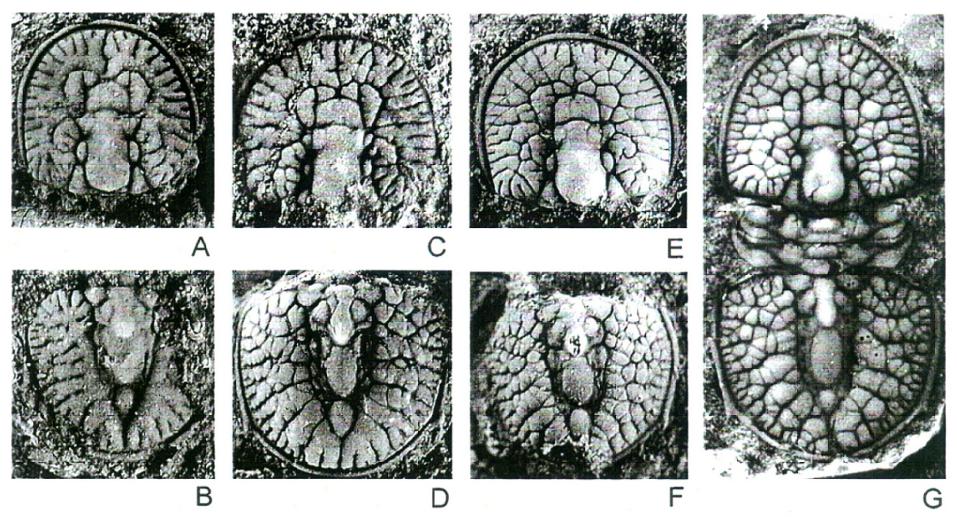Agnostida Biota of Paibian Stage in Cambrian System
Most of Agnostida of the section of Paibian Stage were widely distributed around the world, and the section shared the same FAD point with Glyptagnostus reticulates. Below the point was 7.56m-thick formation (G.stolidotus zone) containing Glyptagnostus stolidotus, which featured radial grooved pattern instead of reticular pattern at the buccal part of the head and the rib part of the tail (see Figure 1-16A-B); immediately above the point first appeared the relatively primitive type of Glyptagnostus reticulates,i.e., the previously considered “subspecies” - G.reticulates angelini, which featured reticular shape of some grooved patterns (rear buccal part of the head and the front of the tail (see Figure 1-16C - D); further above was Glyptagnostus reticulates whose grooved patterns became more complicated as the grooved patterns at the whole buccal part and rib part were reticular (see Figure 1-16E-G), i.e., the previously considered subspecies G.reticulates reficulatus. Therefore, the bottom points of Furong Series and Paibian Stage were in the successive sequence of evolution from Glyptagnostus stolidotus to Glyptagnostus reticulates (see Figure 1-16A-G).

Figure 1-16 G. stolidotus and G.reticulates Forming from the Section of Paibian Stage
A.Head of G. stolidotus B. Tail of G. stolidotus, ×10, collecting point distance: 364.5m;
C. Head of G.reticulates D. Tail of G.reticulates, ×7, collecting point distance: 369.06m;
E. Head of G.reticulates F. Tail of G.reticulates, ×7, collecting point distance: 371.42m;
G. Dorsal valve of G. reticulates, ×7, collecting point distance: 383.50m;
QR Code



